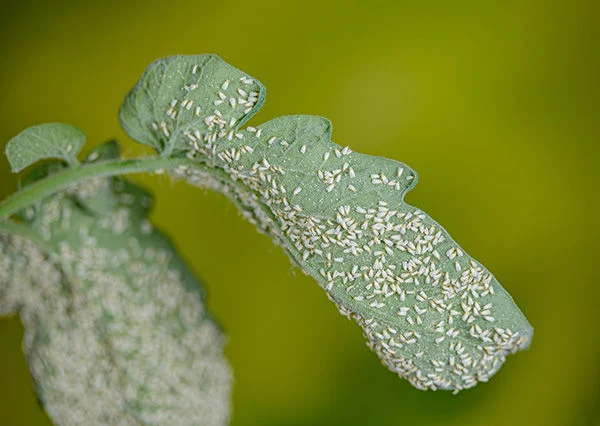If you're growing tomatoes and notice curled leaves in tomato plants, don’t panic, tomato leaf curling is a common issue with many possible causes. While sometimes harmless, it can also signal serious problems like viruses or environmental stress. Understanding why tomato plant leaves curl is the first step toward a healthy harvest.
 |
| Tomato Plant with Curled Leaves |
In this post, we’ll explore the different types of tomato curl leaf problems, what causes them, how to identify tomato leaf curl virus symptoms, and most importantly, how to treat curly tomato plant leaves effectively.
Common Reasons for Curling Tomato Leaves:
Let’s break down the main causes of tomato plant leaves curling and what you can do about them.
1. Environmental Stress (Physiological Leaf Curl):
This is the most common and least harmful reason for tomato leaf curling.
Causes:
- Excessive heat (above 85°F/30°C)
- Too much pruning
- Overwatering or underwatering
- Wind stress
Symptoms:
- Leaves curling upward or inward
- No yellowing or spots
- The plant otherwise looks healthy
Cure:
- Provide shade during extreme heat
- Water consistently (1–1.5 inches/week)
- Avoid heavy pruning
- Mulch to retain moisture
✅ This type of curling usually corrects itself.
2. Tomato Leaf Curl Virus (TLCV):
Tomato leaf curl virus is a serious disease that can drastically reduce yield.
Tomato leaf curl virus symptoms:
- Upward curling of young leaves
- Yellowing between veins (chlorosis)
- Stunted growth and small fruits
- Brittle or thickened leaves
Tomato leaf curl virus is transmitted by:
Cure for tomato leaf curl:
- Remove and destroy infected plants
- Control whiteflies with neem oil, insecticidal soap, or yellow sticky traps
- Use resistant tomato varieties
- Practice crop rotation
3. Tomato Yellow Leaf Curl Virus (TYLCV):
A specific strain of TLCV, Tomato Yellow Leaf Curl Virus, is widespread and highly damaging.
 |
| Tomato Yellow Leaf Curl Virus |
Symptoms:
- Yellow leaf curl virus causes leaf edges to curl upward
- Leaves become yellow, crumpled, and thick
- Reduced flowering and fruit set
Treatment:
- Same as for TLCV: focus on whitefly control and resistant varieties
4. Herbicide Damage (Chemical Drift):
If you notice curly leaf disease in tomatoes with twisted, malformed foliage, herbicide drift may be the culprit.
Symptoms:
- Wrinkled or puckered leaves
- Narrow, elongated growth
- Lower leaves may appear unaffected
Common herbicides that cause damage:
- Glyphosate
- 2,4-D
- Dicamba
Cure:
- Prevent exposure to herbicides
- Use physical barriers if nearby spraying is common
- Unfortunately, affected plants rarely recover fully
5. Pests (Aphids, Thrips, Whiteflies):
These pests not only stress plants but can also transmit viruses like the tomato leaf curl virus.
 |
| Aphid Infestation on Tomato Leaves |
Symptoms:
- Curled or sticky leaves
- Presence of insects on the undersides
- Yellowing or distortion of new growth
Treatment:
- Spray neem oil or insecticidal soap
- Introduce beneficial insects (ladybugs)
- Use reflective mulch to deter whiteflies
How to Diagnose the Curling Tomato Leaves Problem:
Use this quick checklist to identify the issue:
| Symptom | Likely Cause |
|---|---|
| Leaves curl upward only, no yellowing | Heat, pruning, or water stress |
| Curling + yellow veins + stunted growth | Tomato leaf curl virus |
| Yellow curling leaves, reduced yield | Tomato yellow leaf curl virus |
| Misshapen or twisted leaves | Herbicide drift |
| Sticky leaves, visible pests | Aphids or whiteflies |
Tomato Leaf Curl Virus Treatment Tips:
- Remove infected plants early to prevent spread.
- Control vectors like whiteflies immediately.
- Disinfect tools and avoid working with wet plants.
- Choose disease-resistant tomato varieties labelled “TYLCV-resistant.”
- Practice companion planting (e.g., marigold) to deter whiteflies.
Preventing Tomato Leaf Curling in the Future:
- Start with healthy seedlings: Buy from reputable nurseries.
- Inspect for pests regularly: Weekly checks can stop issues early.
- Maintain consistent watering: Avoid extreme dryness or overwatering.
- Use shade cloth in extreme heat: Protects from physiological leaf curl.
- Rotate crops annually: Avoid planting tomatoes in the same spot every year.
Final Thoughts:
Seeing curly tomato plant leaves can be alarming, but not all tomato leaf curling is a sign of disease. Whether it’s environmental stress, pests, or a viral infection like tomato yellow leaf curl, identifying the cause is key to finding the right cure for tomato leaf curl.
With early detection, good gardening practices, and proper treatment, your tomatoes can bounce back and thrive. Remember: healthy leaves lead to juicy tomatoes!






